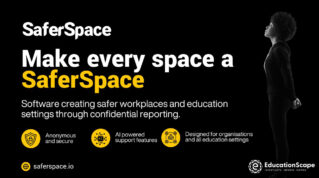At Basingstoke College of Technology (BCoT), we’ve always believed in harnessing technology for good. We were among the first colleges to give every student access to AI tools like Gemini, and over 1,000 learners have completed our AI @ BCoT module, earning their ‘driver’s licence’ for AI literacy. But over the decade I’ve led on digital, our approach has become increasingly sceptical, deliberate and intentional. Technology should enhance learning, not fragment attention.
So, from September 2024, we made mobile phones ‘no by default’ in classrooms.
Unless their use is part of a planned learning activity, they stay out of reach.
Why We Made This Change
The documentary The Social Dilemma (2020) was pivotal. I’d spent years embracing digital tools, integrating Snapchat into lessons and live-streaming debates with students in the US. But the documentary forced me to confront the reality: these platforms are engineered to extract attention, not nurture deep engagement.
In 2021, we conducted research into our students’ phone habits. They spent on average 5.7 hours a day on their phones—equivalent to 13.8 years of their life. The cognitive cost of distraction was evident in lesson observations. US research showed us that students unlock their phones for non-classroom use 11.7 times per lesson, and that it takes 23 minutes to regain focus after each distraction. In a single lesson, we ourselves observed students could be spending more time recovering from interruptions than actively engaging in learning.
Jonathan Haidt’s book The Anxious Generation (2024) further cemented our concerns. His research on young people shows us how constant digital stimulation contributes to anxiety, attention fragmentation, and a decline in real-world social skills. What we often call disengagement is, in many cases, technology-driven hyperstimulation.
Our students weren’t just distracted—they were becoming dependent. One learner confided that he spent hours every day on explicit sites and video games, struggling to disengage. His story, along with the overwhelming research, made it clear: we needed decisive action.
‘No by default’
We implemented a simple but firm policy that mobiles can only be used if a teacher has deliberately planned their use – for example for capturing photos of work, recording audio and transcripts, or video evidence of an activity.
Lockers were installed in every classroom to store phones securely, removing the temptation to check notifications mid-lesson.
Staff are susceptible to the constant temptations and distractions devices create too, and lead by example by placing their phones in lockers or out of sight.
Our principal, Anthony Bravo, personally addressed every student to ensure clarity in the first week.
The Impact: A Culture Shift
The transition wasn’t easy. Suspensions spiked in the first two weeks as students adjusted. But over time, the impact has been interesting:
✅ Improved focus and engagement – Without constant notifications, students report feeling more present in lessons.
✅ Fewer behavioural issues – A marked drop in classroom disruptions and disciplinary actions.
✅ A more intentional relationship with technology – Phones are now a tool for learning directed by teachers, not a default distraction.
Interestingly, some students admitted feeling relieved. “It’s actually quite nice,” one said. “I don’t have to keep up with messages and streaks all the time.”
Lessons for other colleges considering a similar approach:
- Frame the change as intentional, not punitive – This isn’t about banning tech; it’s about balance.
- Communicate with clarity and consistency – Management, staff and students need to understand why this matters. Remind students every lesson – we have it on their computers when they log on.
- Expect resistance—but stay the course through the first term. Long-term benefits outweigh the initial pushback.
The challenges we all face in the attention economy are not just about setting guardrails for our students, but about trying to model healthy habits.
The truth is I really struggle to manage the overwhelming and profound distraction every day, so I am now a 42-year-old man on an information diet.
Even though I’m lucky enough to love my job, I still need boundaries to maintain a healthy relationship with technology – without them I slip. It’s a constant battle. And when I see drivers at junctions glancing at their phones and parents in restaurants with their eyes glued to screens, I know I’m not the only one struggling to stay present.
We can’t change the attention economy overnight, but we can start by reclaiming our classrooms as spaces for deep focus, meaningful engagement, intentional use of technology, and real human connection.













Your thoughts